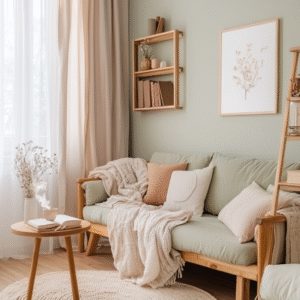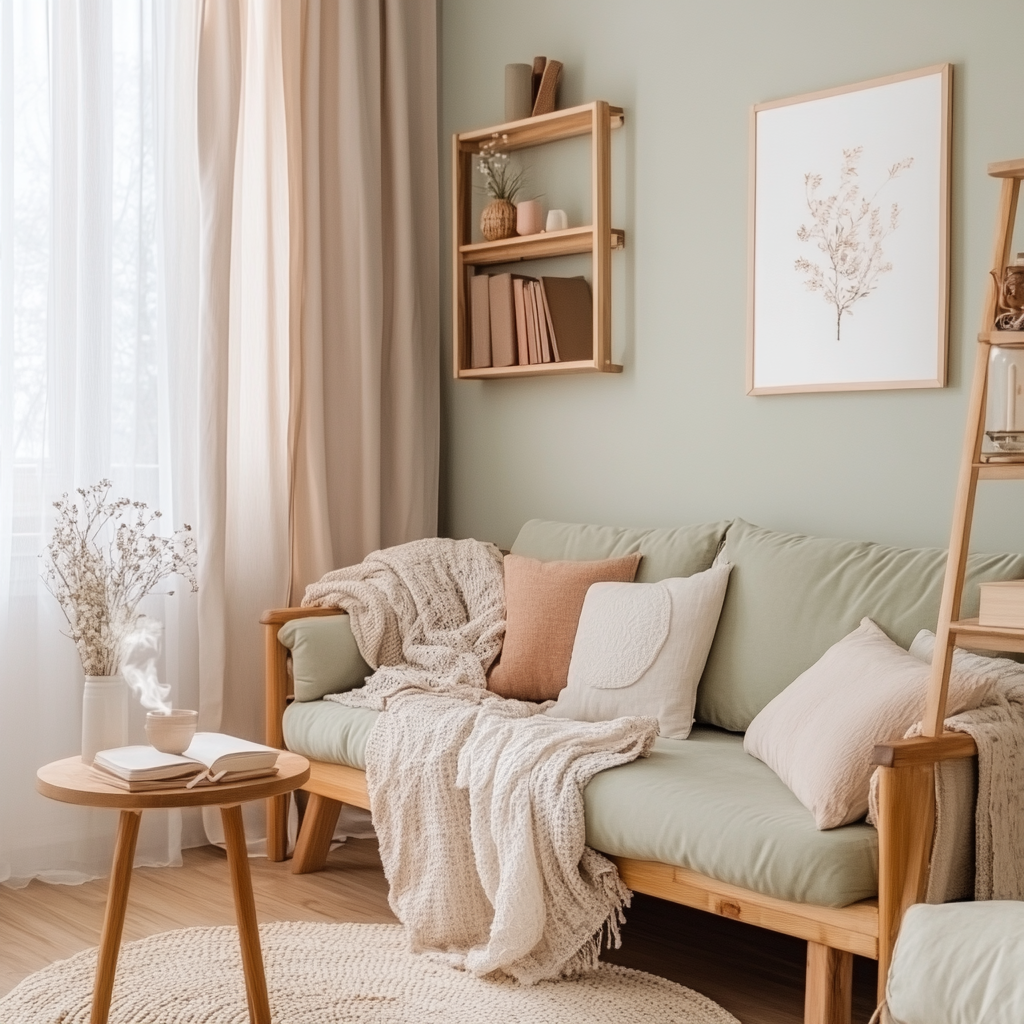Life can feel chaotic between work, family, and the daily grind. It’s easy to forget how important it is to have a space where you can fully unwind. Your home should be your sanctuary, a place that supports your well-being and allows you to recharge.
You don’t need a full renovation to create a relaxing home; small changes in how you arrange, decorate, and experience your space can make a big difference.
This guide will show you how to make your home a calm and comfortable retreat, no matter its size or style.
Why Your Home Should Be Your Sanctuary
The spaces you live in affect your mood, energy, and mental clarity. Cluttered or visually noisy environments can trigger stress or anxiety, while soothing, well-ordered spaces help your brain and body relax. Think about the places where you feel most at ease. Is it a cosy coffee shop, a quiet park, or a soft hotel room?
If you make small, intentional changes, your home can provide the same comfort. Ask yourself if you currently have a corner or room that makes you feel calm and safe. If not, now is the perfect time to create one.
Declutter for Mental Clarity
Clutter has a way of sneaking up. It fills countertops, corners, and drawers, creating mental and physical noise. Starting small can make the process feel less overwhelming. Focus on one area—maybe your bedside table or kitchen counter.
Ask yourself if the items in that space are adding to your life or taking away from it. The goal isn’t to strengthen your home there, but to remove the things that no longer serve you. The result is a space that feels lighter and more peaceful. You will start to feel more organised and have more mental space to focus.
Choose Soothing Colours

Colours play a key role in how a room feels. Soft, muted tones can create an immediate sense of calm. Consider greens, gentle greys, warm beige, or dusty blues.
These shades promote comfort and relaxation without overwhelming the senses. If you enjoy bold colours, you can still use them—keep them to small touches like pillows, artwork, or vases while keeping the largest surfaces in more neutral tones.
Add Layers of Texture
Texture creates warmth and softness, this can make a space feel more inviting.
Think about adding cosy throws draped over your sofa, a soft area rug, or curtains that sway gently in the breeze. You don’t need to overhaul your entire décor; even adding a few textured elements can change how a room feels.
Make Your Bedroom a Restful Space
Your bedroom should be the ultimate retreat within your home. Avoid turning it into an extension of your workspace. Remove screens, work documents, and other distractions. Invest in comfortable bedding made from breathable fabrics.
Keep the décor simple and soothing, focusing on pieces that make you feel good. Use soft lighting rather than harsh overhead lights to help signal to your body that it’s time to wind down. Blackout blinds or curtains can help you create a dark, restful environment for better sleep. This brings us to another often overlooked detail: controlling the balance of light and privacy.
Balance Light and Privacy
The right balance of natural light and privacy can turn the space from harsh and exposed to cosy and secure; this is where a company such as SoEasy Blinds can help. Their range of stylish blinds gives you complete control over how much light you let into your space while protecting your privacy.
Whether you want the softness of fabric blinds or the sleekness of wooden shutters, their products make it easy to create an environment that feels both open and also give you privacy when you need it.
It’s a small but impactful change that enhances comfort and makes you feel at ease in your own.
Engage Your Senses with Calming Scents
Scent is an overlooked topic, yet it plays a powerful role in how you experience your space. Adding scents, like aromatherapy through essential oils, candles, or diffusers, can create an immediate sense of calm.
Scents like lavender, eucalyptus, or vanilla promote relaxation and comfort. Start with one or two scents that you love and incorporate them into your daily routines, perhaps a lavender diffusion in a bedroom or a vanilla candle in the living room.
Bring Nature Inside
Even if you don’t have a green thumb, plants can change the feeling of a room. Houseplants reduce stress, improve air quality, and bring a touch of the outdoors in.
You don’t need a green thumb, either; many low-maintenance options, like snake plants or peace lilies, thrive indoors with minimal care. If live plants feel intimidating, high-quality artificial plants can still provide the calming visual benefits of green.
Create Personal Retreat Corners
You might not have a dedicated meditation room or spa bathroom, but you can carve out small spaces of calm within your existing rooms. It could be a cosy chair by the window with a soft blanket or your favourite book, or a bathroom shelf stocked with bath salts, candles, and a fluffy towel for a relaxing soak. These personal retreat corners are reminders to pause, breathe, and enjoy mindful moments throughout the day.
Reduce Unwanted Noise
Noise can disrupt relaxation as much as clutter. Use thick rugs, heavy curtains, and upholstered furniture to absorb sound. White noise machines, gentle music, or nature sounds could also create a soothing audio environment if your home is in a noisy area. Even smaller additions, like acoustic panels disguised as artwork, can help to reduce sound distraction.
Make It Personal
Above all, your home oasis should reflect you. This means that you should include things that spark happiness and comfort, whether it’s a favourite photograph, a well-loved book, or an heirloom passed down through your family. Decorate with intention and choose pieces that make you feel grounded and connected to your space.
Embrace Slow Living at Home
Creating a relaxing home oasis isn’t just about how your space looks; it’s also about how you experience it. Slow living encourages you to be present in your home. It’s about enjoying small rituals, whether it’s brewing a cup of tea, tending to your plants, or sitting quietly with a book.
You can bring this mindset into your daily routines by taking time to prepare and enjoy meals without any distractions, opening a window so that you can get some fresh air and listen to nature sounds, and creating a calm morning or evening routine that sets the tone for your whole day.
When you take the time to slow down and create mindful moments in your home, even the simplest spaces can feel like a personal retreat.
This approach reminds you that your home isn’t just a place to rush through chores; it’s where you can nurture yourself.
Conclusion
Creating a relaxing home oasis is less about buying new things and more about making mindful changes. Declutter to clear space for calmness, soften your room with natural textures and soothing colors, use lighting and scents to create a nurturing environment, and add in a few plants and quiet spaces where you are able to retreat and recharge.
Consider upgrading to quality blinds from So Easy Blinds so that you can create the right balance of light and privacy around your home. This type of small change can make your space feel more secure, cozy, and the perfect place for you to rest.
Your home should be somewhere that supports your well-being, not adds to the stress. Start with one small change today, and build from there over time. These shifts can transform your living space into a true sanctuary that invites you to slow down, breathe, and feel at peace.
0
Related
Read the full article here



